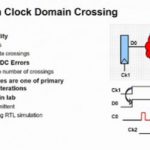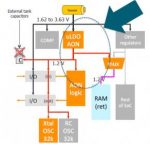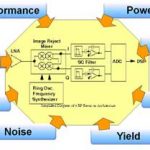Power has become a very important metric in modern designs – for mobile and IoT devices which must live on a battery charge for days or years, for datacenters where power costs can be as significant as capital costs, and for increasingly unavoidable regulatory reasons. But accurate power estimation on a design must start from an … Read More
 EDA Has a Value Capture Problem — An Outsider’s ViewBy Liyue Yan (lyan1@bu.edu) Fact 1: In the…Read More
EDA Has a Value Capture Problem — An Outsider’s ViewBy Liyue Yan (lyan1@bu.edu) Fact 1: In the…Read More WEBINAR: How PCIe Multistream Architecture is Enabling AI ConnectivityIn the race to power ever-larger AI models,…Read More
WEBINAR: How PCIe Multistream Architecture is Enabling AI ConnectivityIn the race to power ever-larger AI models,…Read More A Six-Minute Journey to Secure Chip Design with CaspiaHardware-level chip security has become an important topic…Read More
A Six-Minute Journey to Secure Chip Design with CaspiaHardware-level chip security has become an important topic…Read More Lessons from the DeepChip Wars: What a Decade-old Debate Teaches Us About Tech EvolutionThe competitive landscape of hardware-assisted verification (HAV) has…Read More
Lessons from the DeepChip Wars: What a Decade-old Debate Teaches Us About Tech EvolutionThe competitive landscape of hardware-assisted verification (HAV) has…Read More Think Quantum Computing is Hype? Mastercard Begs to DisagreeJust got an opportunity to write a blog…Read More
Think Quantum Computing is Hype? Mastercard Begs to DisagreeJust got an opportunity to write a blog…Read MoreCDC Verification for FPGA – Beyond the Basics
FPGAs have become a lot more capable and a lot more powerful, more closely resembling SoCs than the glue-logic we once considered them to be. Look at any big FPGA – a Xilinx Zynq, an Intel/Altera Arria or a Microsemi SmartFusion; these devices are full-blown SoCs, functionally different from an ASIC SoC only in that some of the device… Read More
$100M China Investment for FD-SOI Ecosystem!
When GlobalFoundries first briefed me on 22FDX during a trip to Dresden in 2015, China was one of the first things that came to mind. The China semiconductor market was still on 28nm and FinFETs seemed far away for the majority of the Chinese fabless companies. A low cost, low power, low complexity 22nm process with a path to 12nm (12FDX)… Read More
The eFPGA Market is Heating Up!
It is nice to see an emerging market successfully emerge for a change. With embedded FPGAs we are way past test chips and are now seeing tape-outs and silicon in a variety of applications. I’m not sure what the current market estimate of eFPGA is just yet but they align nicely with the $30B+ micro controller market. Market studies have… Read More
Calling on #IoTman to save humanity!
We, in the hi-tech community, tend to gravitate towards the technology, the API, the device, the platform, the processes node and to forget the goal behind all of those items. We have all noticed the platform wars and cloud API struggle for #IoT market domination. Someone needs to bring back the discussion to the top level, to why … Read More
Webinar: Recipe to consume less than 0.5 µA in sleep mode
Dolphin is addressing the ultra-low-power (ULP) needs for some applications, like for example Bluetooth low energy (BLE), machine-to-machine (M2M) or IoT edge devices in general. For these applications, defining active and sleep modes is imperative, but it may not be enough to guarantee that the battery-powered system will… Read More
Webinar – Low Power Circuit Sizing for IoT
Optimizing analog designs has always been a difficult and tricky process. Designing for IoT applications has only made this more difficult with the added importance of minimizing power. Unlike other circuit parameters, it is not easy to specify power as a design goal when using equations. Power is a resultant property and must… Read More
Understanding ISO 26262 Compliance for Automotive Suppliers
The semiconductor, IP, Software and EDA industries are all focusing on the growing automotive market because of its electronic content, size and growth. There are long-time suppliers to the automotive industry, and also first-time vendors that are launching something new every week for electronics in automotive. So where … Read More
Two-Factor Authentication on the Edge
Two-factor authentication has become commonplace for those of us determined to keep the bad guys at bay. You first request entry to a privileged site through a user-name/password, which in turn sends a code to your mobile device that you must enter to complete your admission to the site (there are other second factor methods, but… Read More
Cybersecurity in the World of Artificial Intelligence
Artificial Intelligence (AI) is coming. It could contribute to a more secure and rational world or it may unravel our trust in technology. AI holds a strong promise of changing our world and extending compute functions to a more dominant role of directly manipulating physical world activities. This is a momentous step where we … Read More






AI RTL Generation versus AI RTL Verification